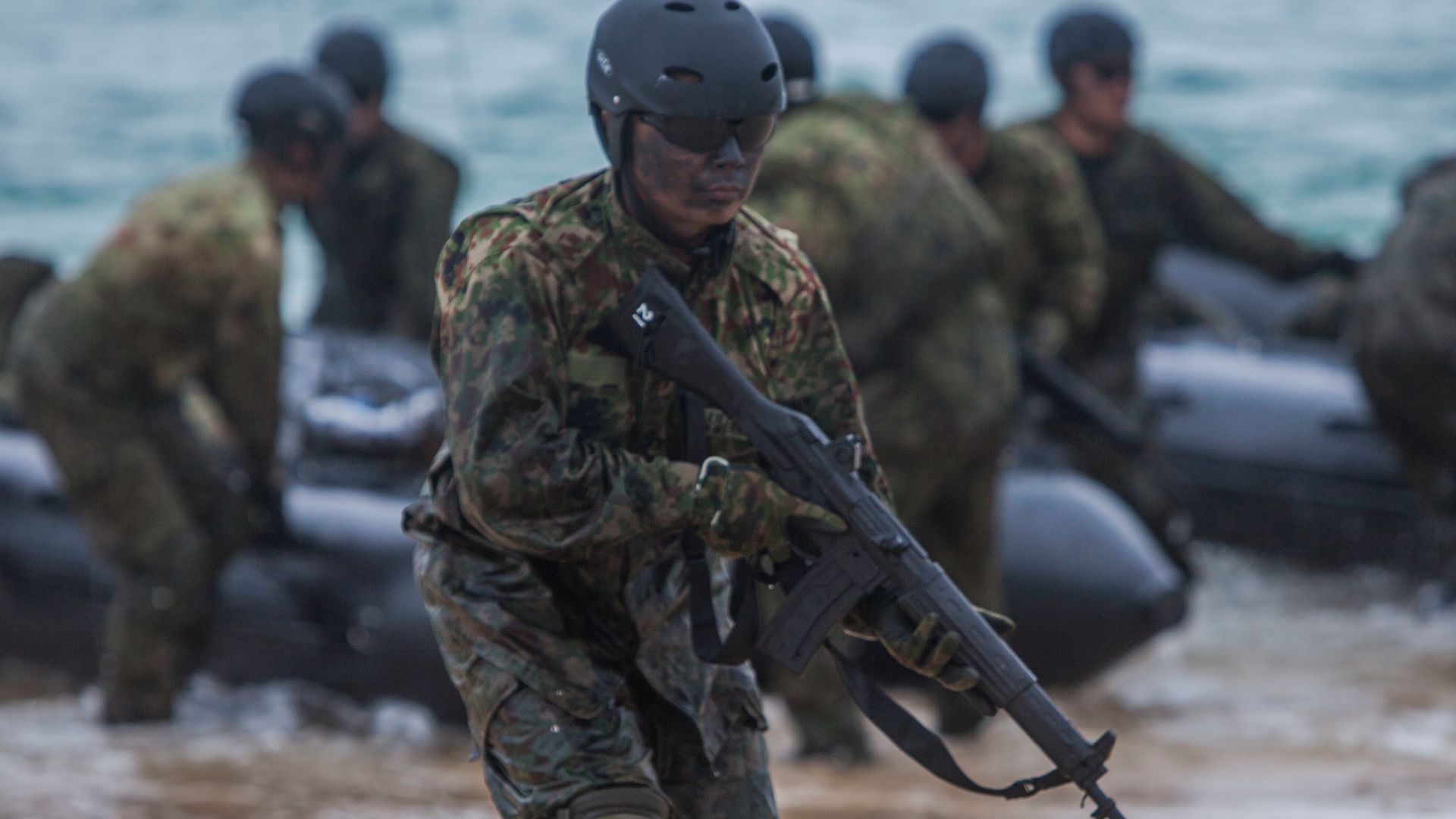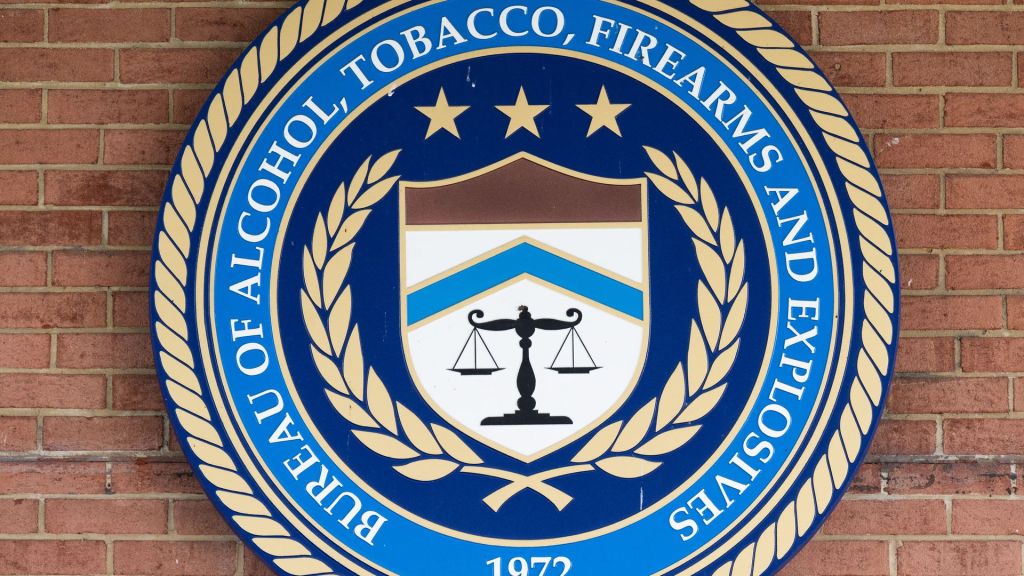
[RYAN ROBERTSON]
UNITED STATES FORCES JAPAN IS GETTING A GLOW UP, AND JAPAN COULDN’T BE HAPPIER ABOUT IT. AFTER A MEETING BETWEEN THE U.S. SECRETARIES OF STATE AND DEFENSE, AND THEIR JAPANESE COUNTERPARTS THE FOUR LEADERS ANNOUNCED A PLAN TO UPGRADE THE HEADQUARTERS OF U.S. MILITARY PERSONNEL IN JAPAN TO A JOINT FORCE HEADQUARTERS.
Secretary of Defense Lloyd Austin:
This will be the most significant change to US Forces Japan since its creation, and one of the strongest improvements to military ties to Japan in 70 years.
[RYAN ROBERTSON]
THE MOVE IS THE NEXT MILESTONE IN MODERNIZING THE ALLIANCE, AS THE TWO ALLIES LOOK TO HEAD-OFF GROWING AGGRESSION FROM CHINA.
THE NEW JOINT FORCES HQ WILL BE COMMANDED BY A THREE-STAR GENERAL, AND SERVE AS A COUNTERPART TO THE JAPANESE SELF-DEFENSE FORCES’ OWN JOINT OPERATIONS COMMAND. AUSTIN SAID THE MOVE ALLOWS FOR GREATER INTEROPERABILITY BETWEEN THE U.S. AND JAPANESE FORCES.
SO WHAT SORT OF OTHER CHANGES SHOULD WE EXPECT TO ACCOMPANY SUCH A SIGNIFICANT ANNOUNCEMENT? WELL, NONE OF THE LEADERS AT THE HISTORIC 2 PLUS 2 MEETING REALLY GOT INTO SPECIFICS.
SO, I TURNED TO JON MOLIK TO FILL IN SOME GAPS FOR ME. HE’S A U.S. INTELLIGENCE OFFICER WITH TWO DECADES OF EXPERIENCE UNDER HIS BELT. HE ALSO HOSTS A PODCAST ABOUT MILITARY HISTORY. SO, SIGNIFICANT EVENTS LIKE THIS ARE RIGHT UP HIS ALLEY.
Jon Molik: It’s interesting because the headquarters already, or the unit that’s in charge of US Forces Japan, is already a three -star command, and it’s already joint in nature. Meaning they have multiple services already supporting what is going on in Japan. The change is really going to come from the command structure. And what I mean by that is the operational command for the forces that are in Japan are currently in Hawaii. And what they want to do is they want to bring the operational right there into Japan so they can streamline orders and they can streamline operations in the event of conflict potentially against China. That’s the number one fear for everyone.
[RYAN ROBERTSON]
MOLIK SAYS STREAMLINING COMMAND STRUCTURES AND PUTTING THEM ONSITE IN AREAS OF POTENTIAL CONFLICT IS PART OF THE ESTABLISHED U.S. PLAYBOOK OF MILITARY PARTNERSHIPS.
Jon Molik: There’s nothing like being in the scenario, being in the environment when your forces are on the ground. It’s just not the same thing when you’re thousands of miles away from what’s actually happening on the battlefield. So, this is something that happens all of the time. We have commands that are located in the United States, but when things get ratcheted up, if you will, then they send commands forward. The number one example right now, our most common example would be Army Central Command, is located at Shaw Air Force Base back in the United States. But when things ratchet up in the Middle East, then they send commanders forward.
[RYAN ROBERTSON]
MOLIK SAYS ONE VERY IMPORTANT ASPECT OF THE NEW AGREEMENT, IS HOW MUCH WORK JAPAN HAD TO DO ON ITS OWN TO GET HERE.
Jon Molik: Japan had to reach a certain amount of milestones in its defense strategy, in its defense funding, and its defense operations in order for the United States to agree to send an operational command to Japan in the same way that they have (South) Korea. So, Japan has now reached those expectations. That’s why the State Department was involved as well. It’s not always the Department of Defense that’s involved in those negotiations as to how a country is going to outfit and then fund its military.
[RYAN ROBERTSON]
IN ADDITION TO BEEFING UP THE COMMAND STRUCTURE, THE U.S. WILL ALSO PARTNER WITH JAPAN TO BUILD MORE MUNITIONS. SPECIFICALLY, ADVANCED MEDIUM-RANGE AIR-TO-AIR MISSILES, OR AMRAAMs, AND PATRIOT PAC-3 INTERCEPTORS. DEMAND FOR PATRIOTS IS BOOMING WORLDWIDE LARGELY BECAUSE THE WORLD SEES WHAT RUSSIA IS DOING IN UKRAINE.
U.S. Secretary of State Antony Blinken: It’s a reflection of the fact that security in both of these critical theaters really is indivisible. Inseparable. Prime Minister Kishida was one of the ones who made this so clear, so eloquently when just days after the Russian invasion of Ukraine he made the point that what was happening in Europe today could well happen in this region tomorrow.
[RYAN ROBERTSON]
AND AS ONE FINAL WARNING TO ADVERSARIES IN THE PACIFIC, COUGH COUGH CHINA…
SECRETARY AUSTIN SAID THE US-JAPAN RELATIONSHIP IS IRONCLAD, AND THE U.S. STANDS FULLY PREPARED TO DEFEND ITS ALLIES WITH EVERY TOOL IN ITS ARSENAL, INCLUDING NUCLEAR WEAPONS.
FOR STRAIGHT ARROW NEWS, I’M RYAN ROBERTSON AND IF YOU WANT MORE OF OUR REPORTING ABOUT THE TENSIONS IN THE INDOPACIFIC BE SURE TO DOWNLOAD THE STRAIGHT ARROW NEWS APP TODAY, OR LOG ON TO SAN.COM.











